15 Flying Fun Facts About Albatrosses!
These amazing albatross facts are sure to make your imagination soar! Spread your wings and read on to learn all about these amazing birds!
If you live near the sea, you might see a lot of seagulls around. Well, imagine one of those seagulls but much, MUCH bigger - and you have some idea what an albatross is! You won't find them going through the bins or swooping down to steal your chips, though - albatrosses are very interesting animals, and you're about to learn exactly HOW interesting! Read on to discover how big they get, where they spend most of their time - and why they're sometimes seen as unlucky!
Don't forget, we've got loads more animal facts too! Why not learn all about snow leopards? Or alpacas? Or what about the reclusive goblin shark?
1. There are a LOT of types of albatross
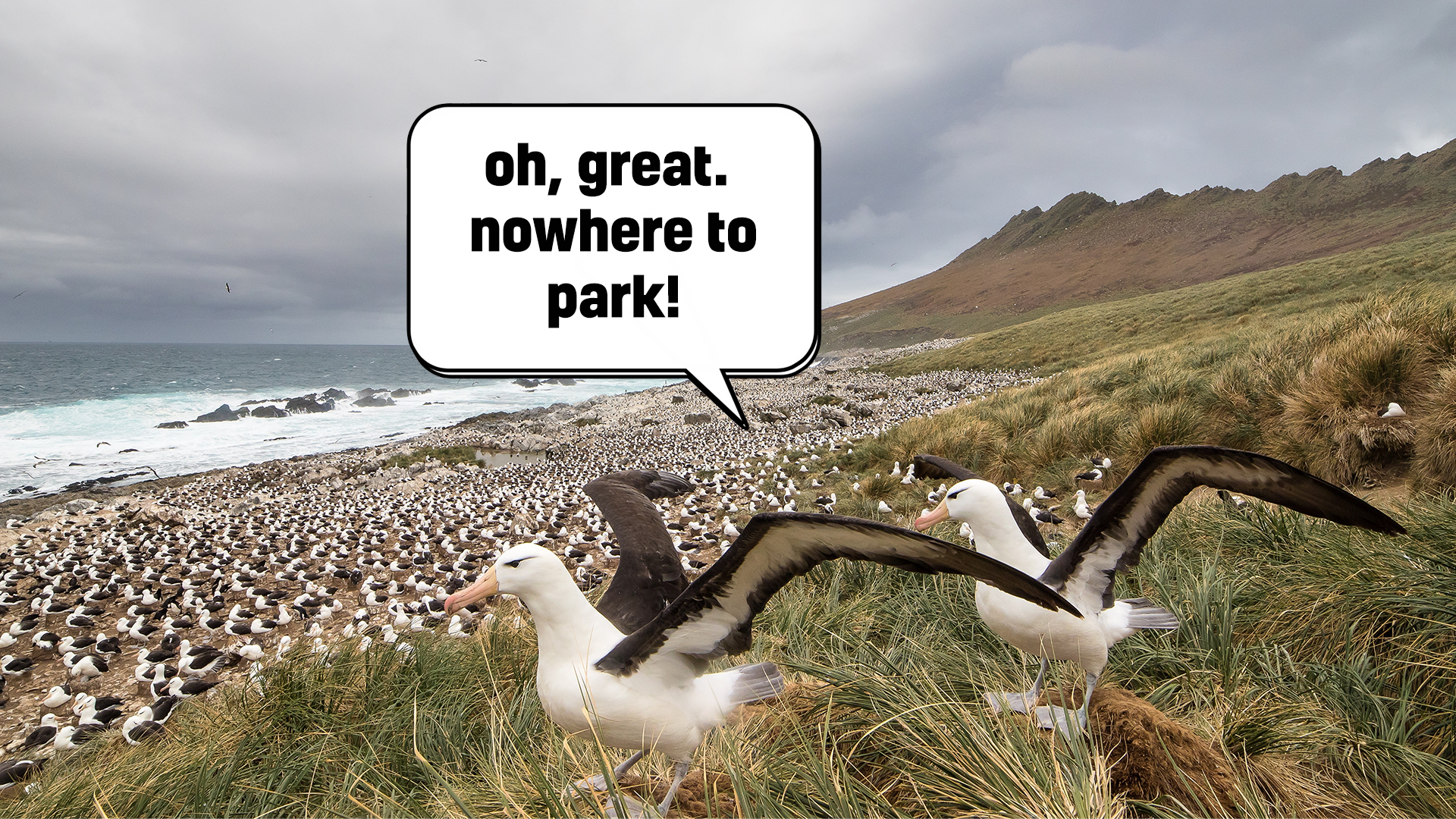
There are between 13 and 24 species of albatross - scientists don't quite agree on how many, but the generally accepted number is 21. There are four types: Great Albatrosses, Mollymawks, North Pacific Albatross, and Sooty Albatrosses. They're all different sizes and have slightly different habits and diets, but all are sea birds!
2. They have the largest wingspan of any living bird!
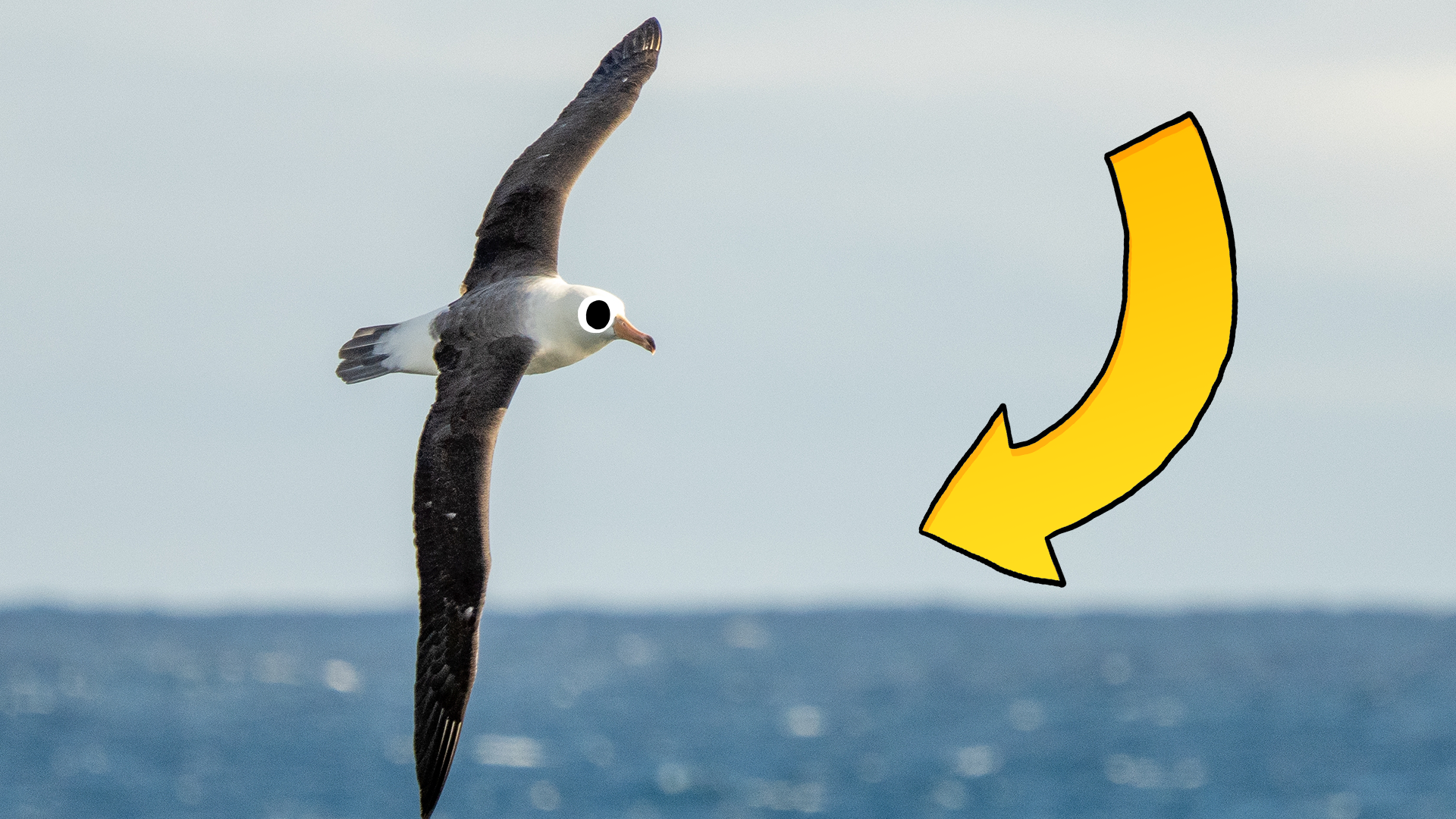
The wandering albatross might be the most famous kind of albatross because of its truly amazing wingspan! When its wings are fully extended they can reach up to 12 feet (3.7 metres). That's about as long as two grown men standing on top of each other! The second longest wingspan belongs to the southern royal albatross, which can reach up to 11 feet 3.3 metres). These massive wings mean that they don't need to flap them very often - a single flap of the wings will carry them for miles, using the ocean winds to travel.
3. They live a long time
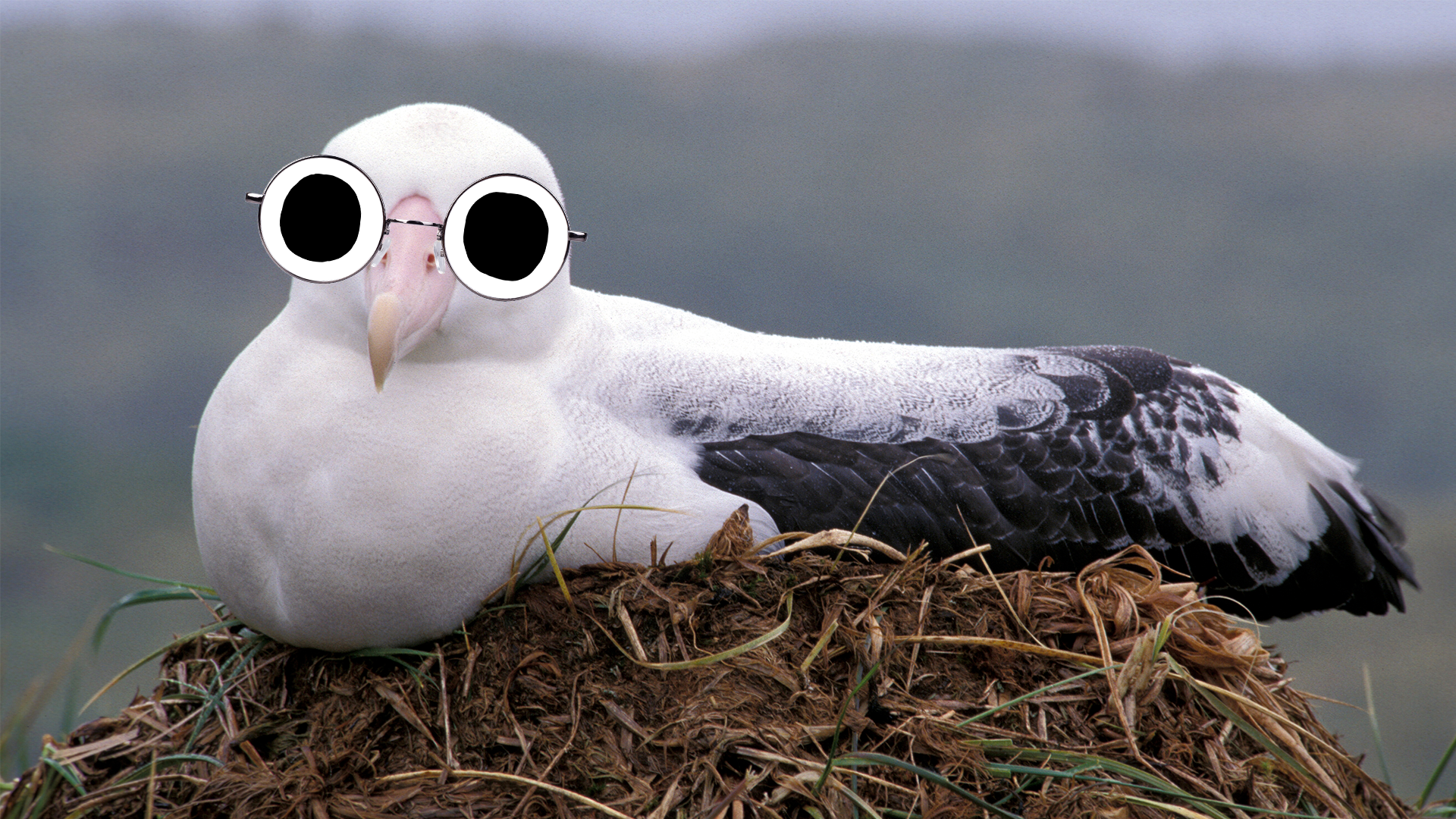
Albatrosses live surprisingly long lives! The southern royal albatross lives nearly 60 years in the wild, and even older birds have been recorded! One albatross, named Wisdom, is believed to be in her early seventies - more on her in a sec!
4. One albatross has a great life story!

Wisdom, a Laysan albatross, is the oldest confirmed wild bird in the whole world! She was first ringed (when scientists attach a tag to a bird's leg) in 1956 in the North Pacific Ocean, and they've kept tabs on her ever since! She and one of her chicks survived the 2011 Japan earthquake, which killed about 2,000 other Laysan albatrosses. She's had a lot of babies during her life - and you might notice in 2011 she would have been about 60! That's because...
5. They can have chicks at an old age
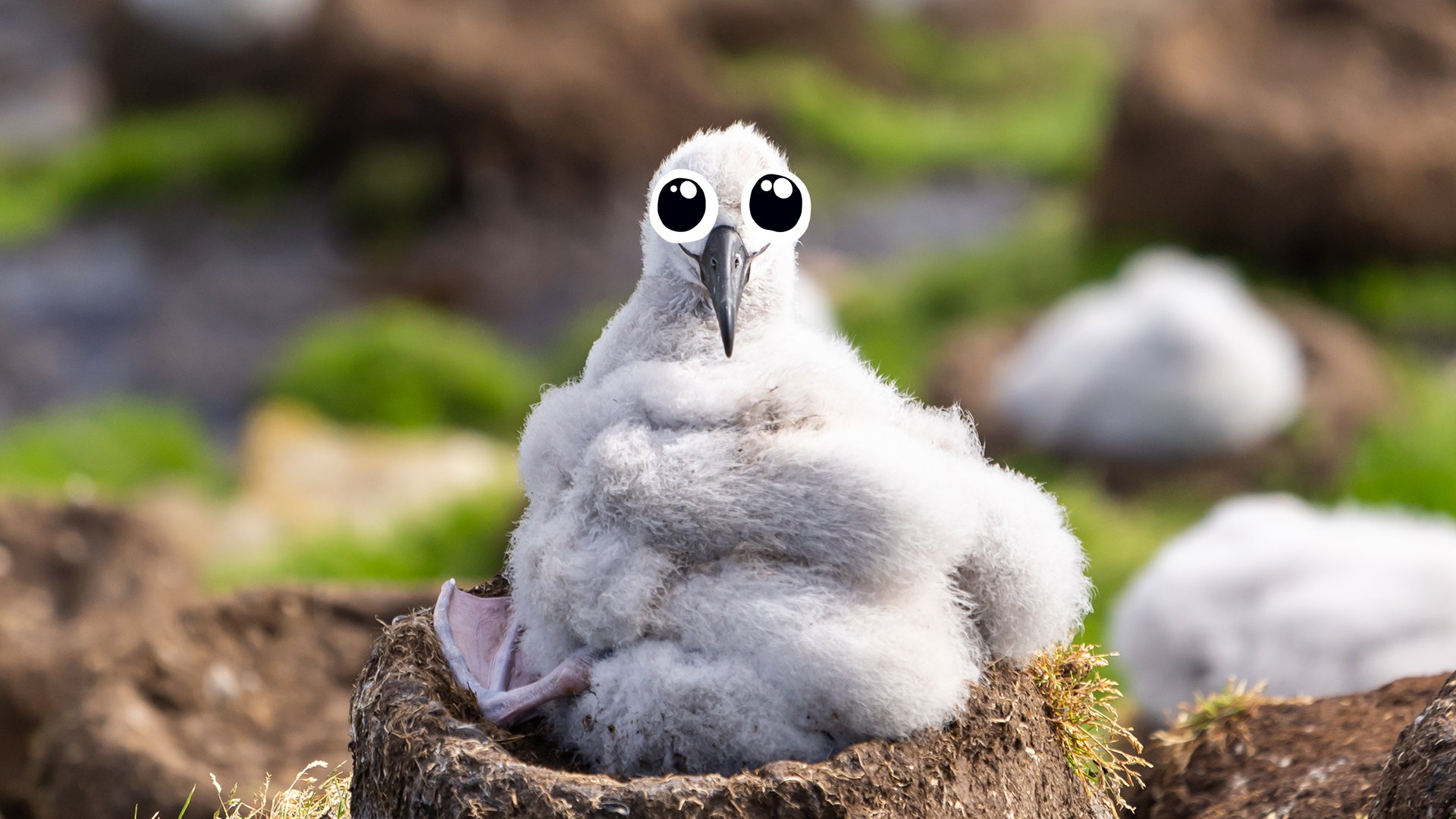
Wisdom's last known chick hatched in 2021 - making her a mother in her 70s! Albatrosses generally breed later and have fewer young than other birds. Baby albatrosses take quite a long time to fledge - about 280 days for the larger species. Another fun fact about Wisdom - her chick from 2011 had its own chick, making her a grandma! Wisdom had a long-time partner called Akeakamai, but he hasn't been spotted in a while. It's possible she's had more partners due to her long lifespan! Speaking of which...
6. They mate for life
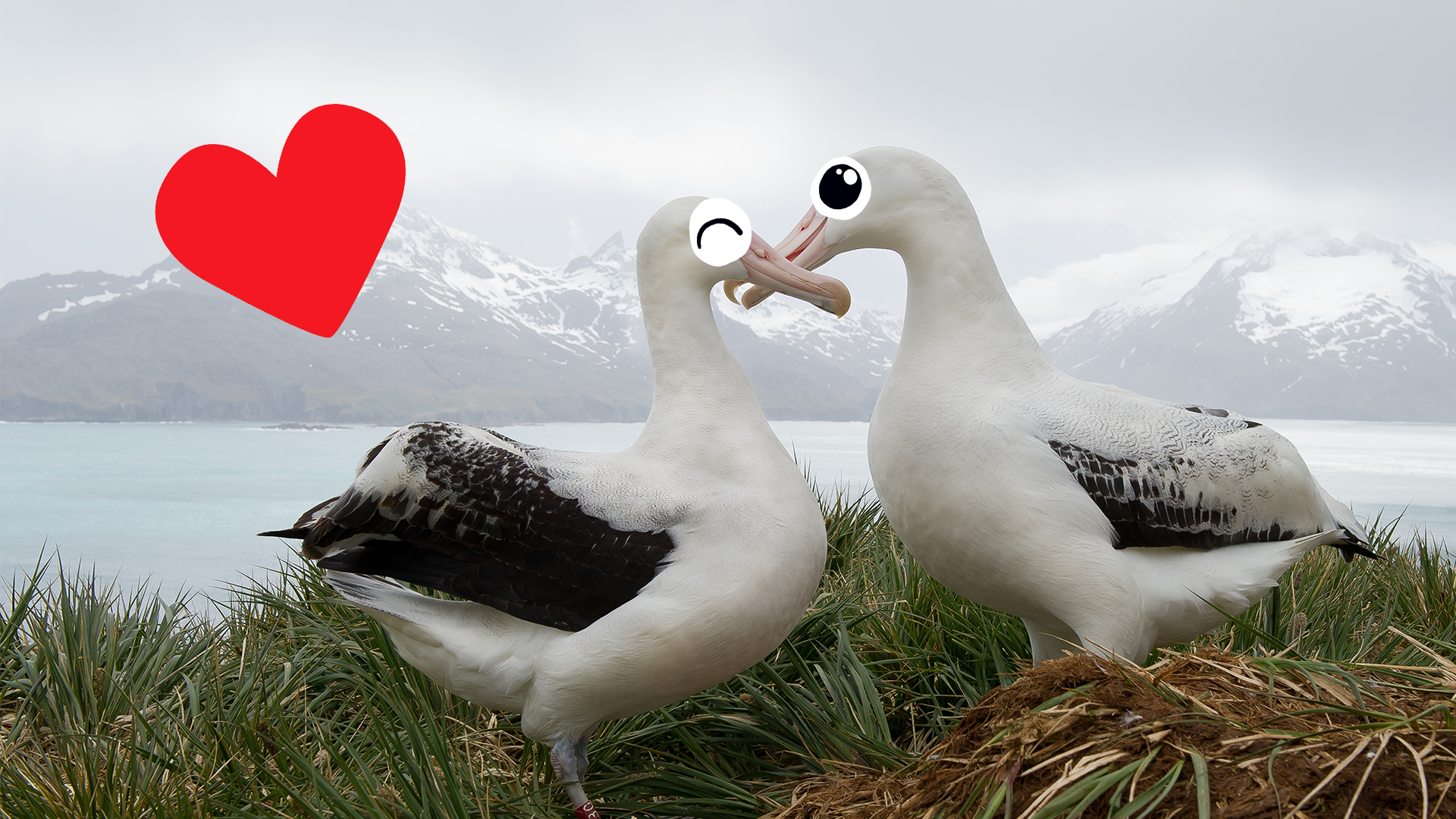
Albatrosses have the lowest "divorce rate" of any bird* - they rarely split up unless one of them dies. That can be more than fifty years! Unlike humans, paired albatrosses actually don't spend that much time together, only during the breeding season and while they're raising the chick. Same-sex albatross pairings have also been recorded in areas where one gender outnumbers the other!
*"divorce rate" is just a saying. There is no such thing as legal bird marriage (as far as we know)
7. They can stay at sea for a long time
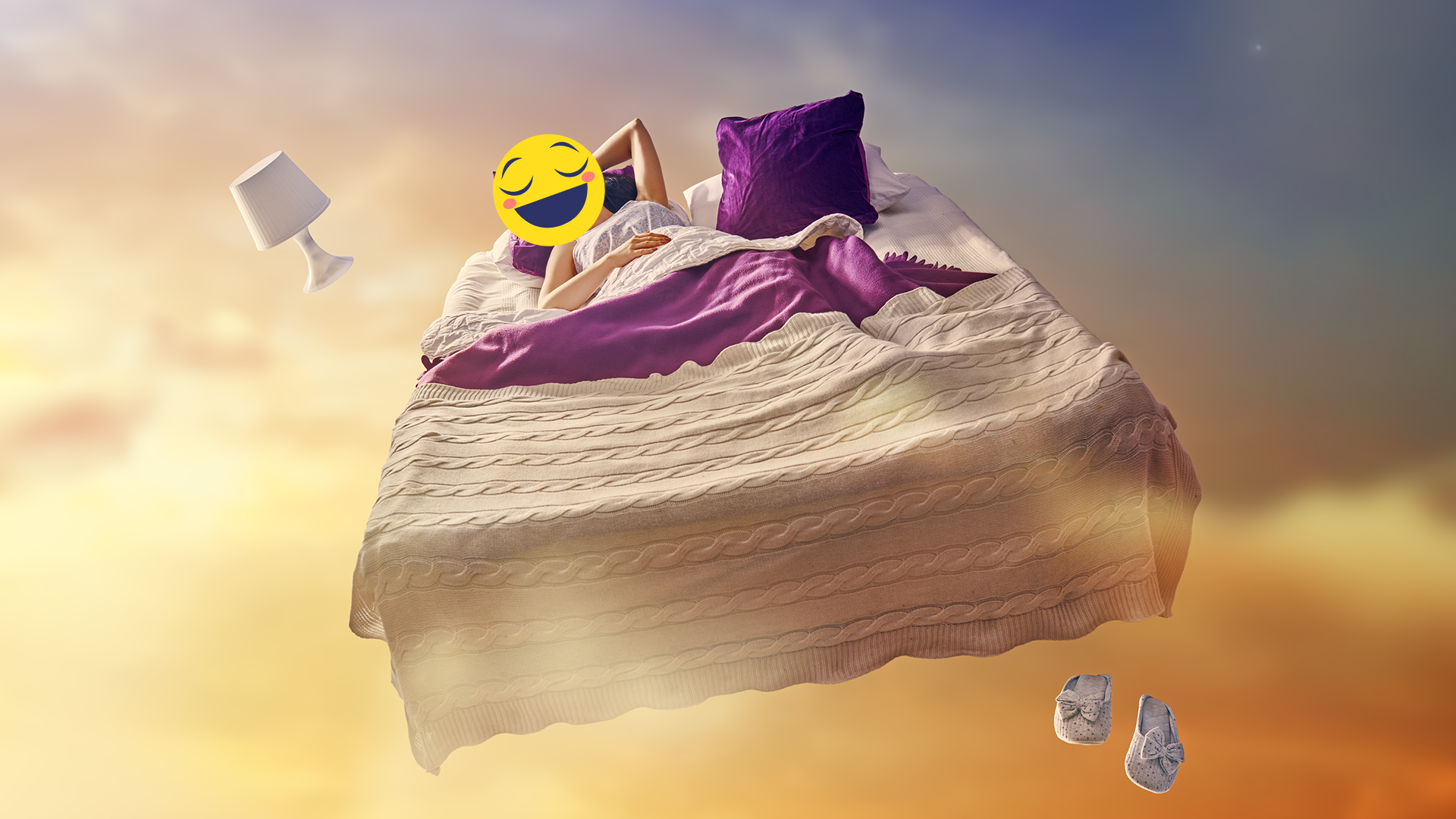
When they're not raising chicks, albatrosses can spend a really long time in the air! Once they've fledged they will typically spend an entire year flying over the ocean, not touching land at all! This is where those ocean currents really come in handy - because they barely flap their wings, albatrosses don't get tired. They even sleep while they're flying, though only for very short periods. They will touch down on the water to feed, but not for too long, otherwise they risk being attacked by sharks.
8. Most are confined to the Southern Hemisphere
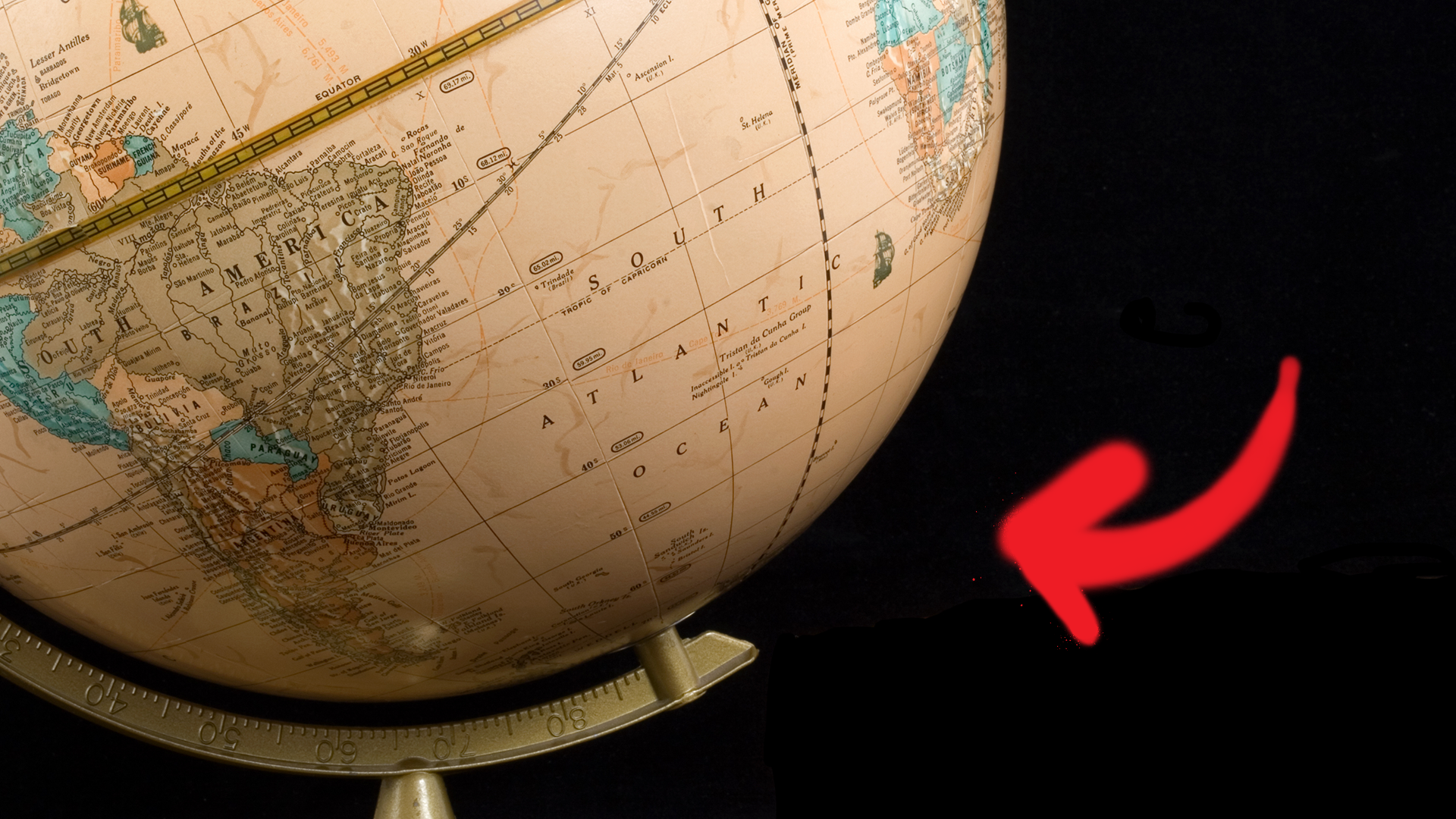
If you go on a sea cruise off the British isles, you probably won't see an albatross. This is because most albatrosses live down South! Their territory spans very wide, from South America and Antarctica to New Zealand, Australia and South Africa. There are four species of albatross that live further north, the North Pacific albatrosses, which can be seen near Japan, Hawai'i, California and Alaska - but if you want to see a wandering albatross, you'll need to go south of the equator! It is thought that albatrosses became extinct in the northern seas, though no one is quite sure why.
9. But every so often one goes north!
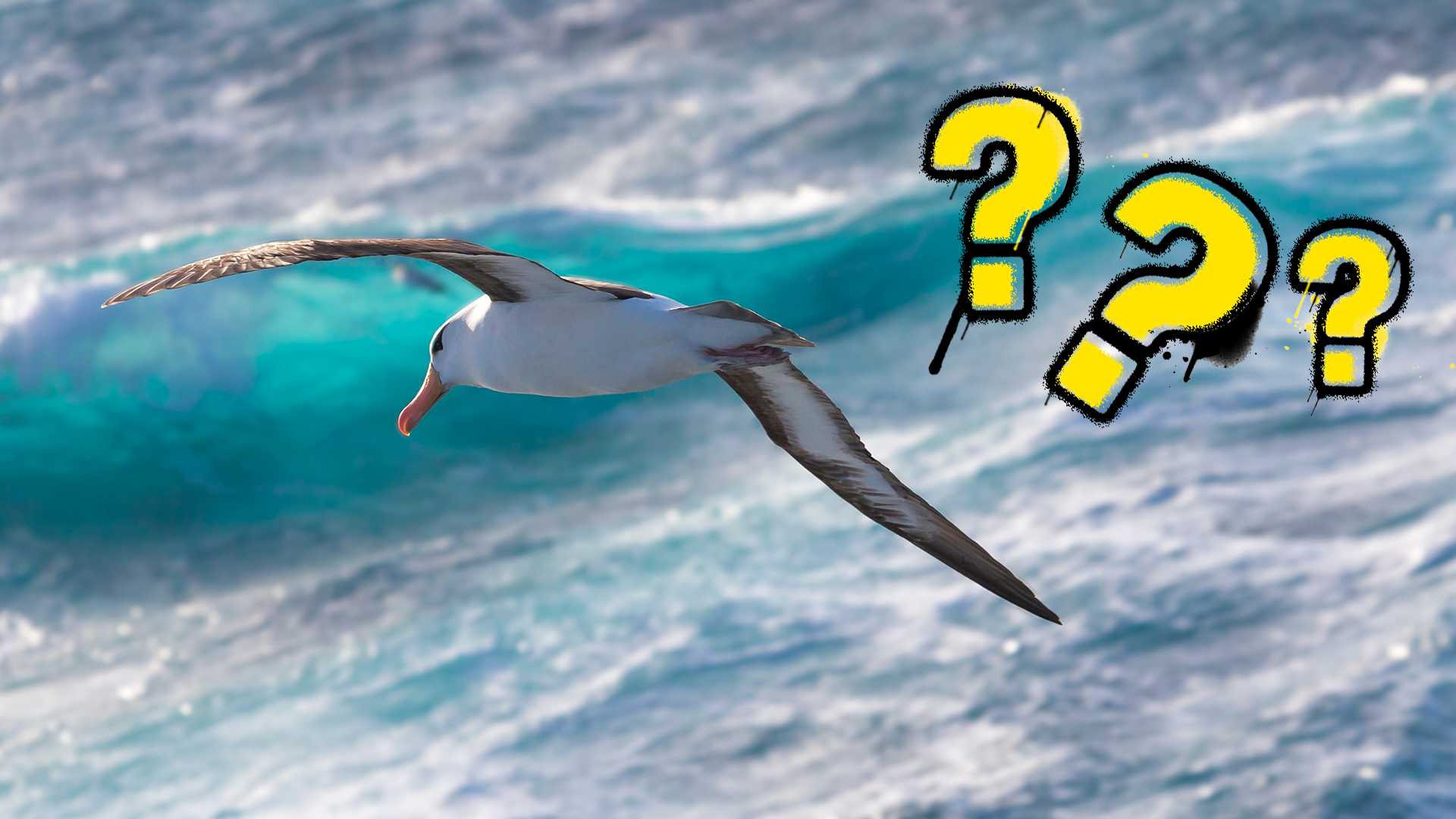
Vagrancy is a phenomenon in wild animals where they will appear well outside their natural habit. It's most common in birds but it's also seen in insects and mammals like bats, cougars, whales and manatees. Occasionally an albatross will be spotted in the northern seas. One, nicknamed Albert, has been seen around gannet colonies in Scotland for at least fifty years! Unfortunately once they've arrived in the north, they can't go back - it's too hard to cross the calm equatorial winds.
10. They're not great parents all the time
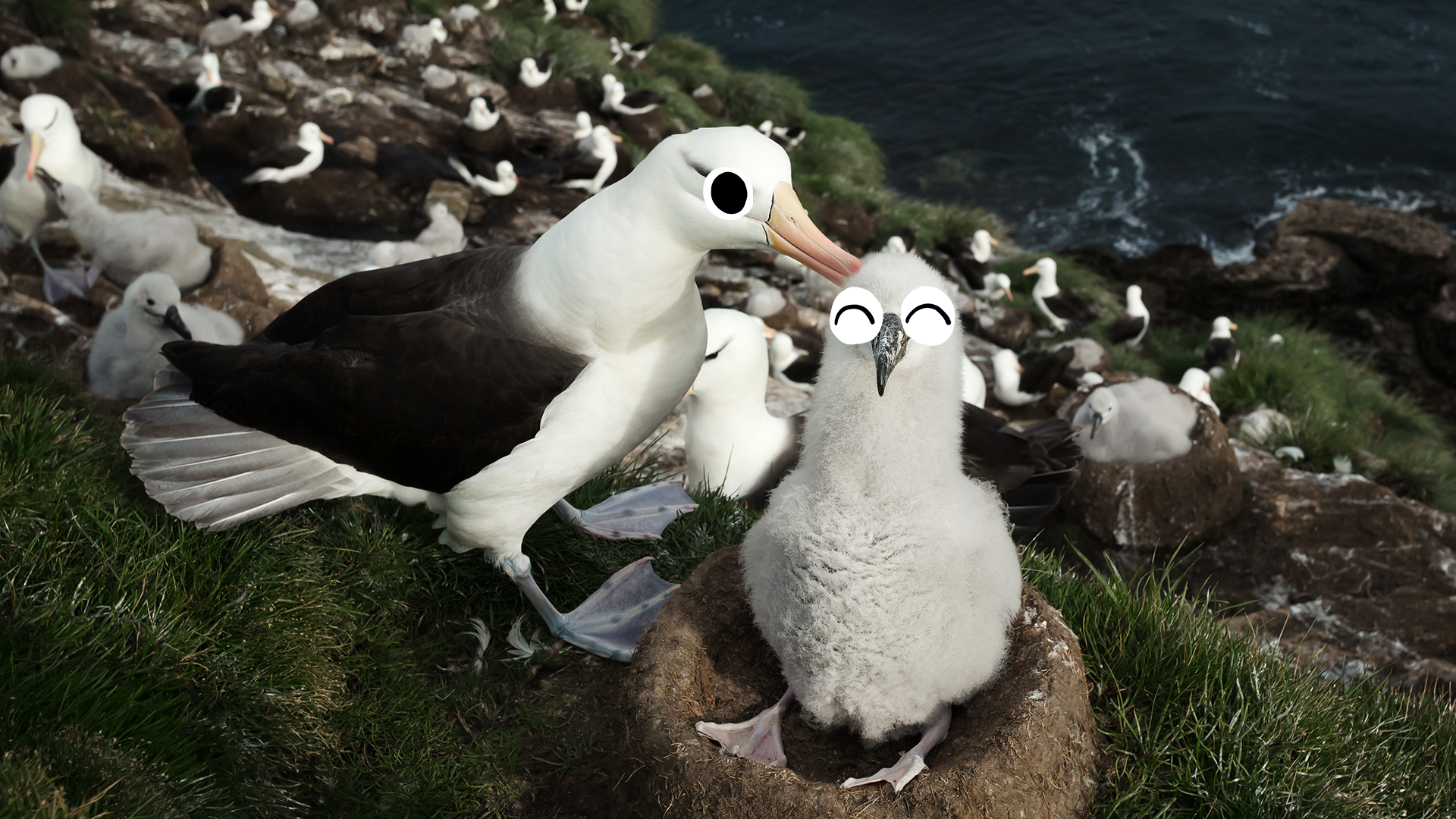
Even though they tend to invest a lot of time in their babies, they aren't perfect parents! If an albatross chick falls out of the nest, the parents will make no attempt to get it back in. Unlike other species they don't identify their young by sight, sound or smell, just by its presence in the nest. This happened on an episode of David Attenborough's Seven Worlds, One Planet, and viewers were so upset it made the news! Luckily in that one instance, the chick got back in and its parents acknowledged it again.
11. They're not very graceful on land
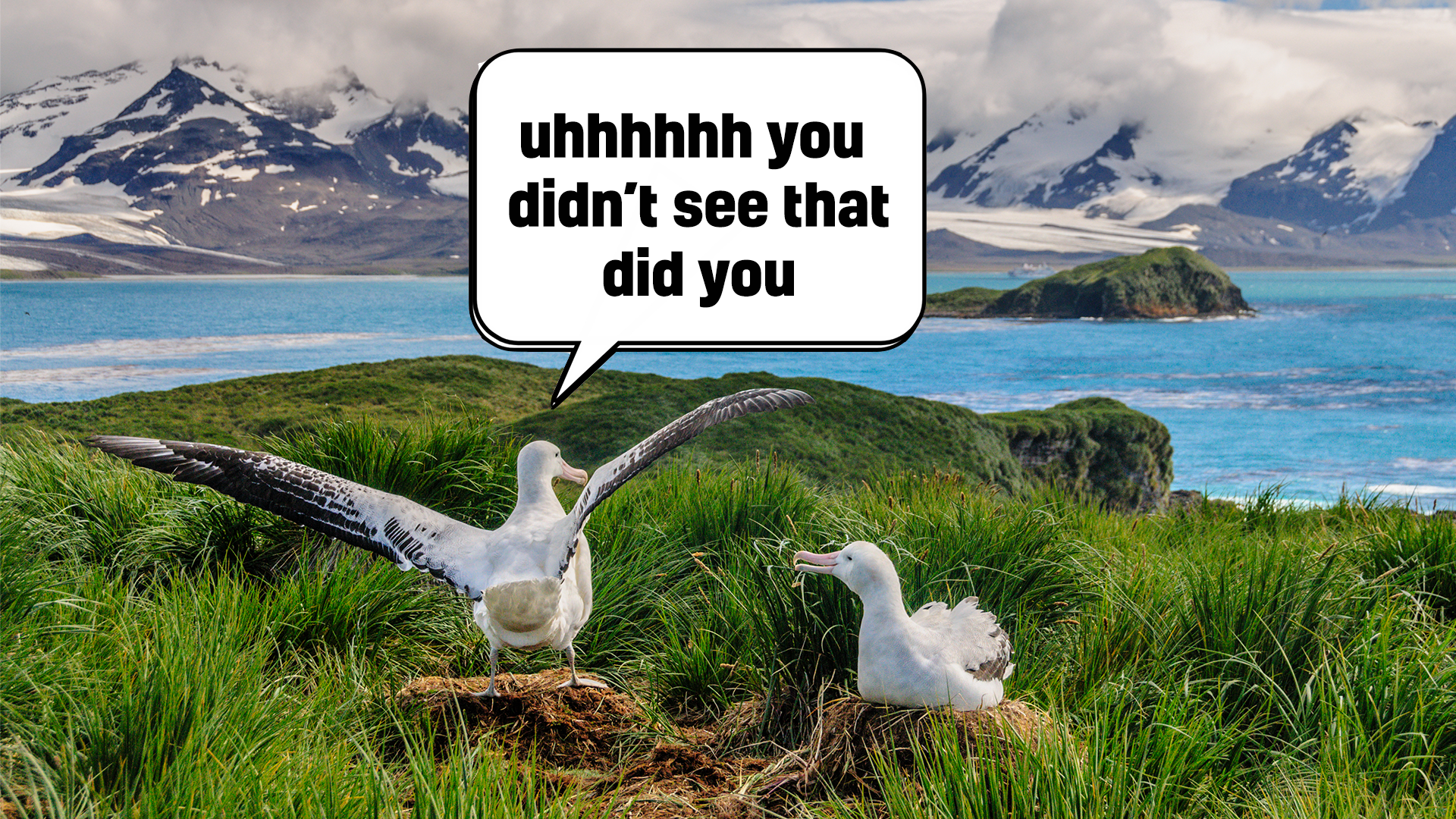
Albatrosses are known as "gooney birds" because of the comical way they take off and land. They're very efficient and graceful in the air, but a bit awkward when they have to go back to earth! They tend to tip forward when they arrive on the ground, causing crash landings and face-plants (beak-plants?)!
12. They have an incredible sense of smell
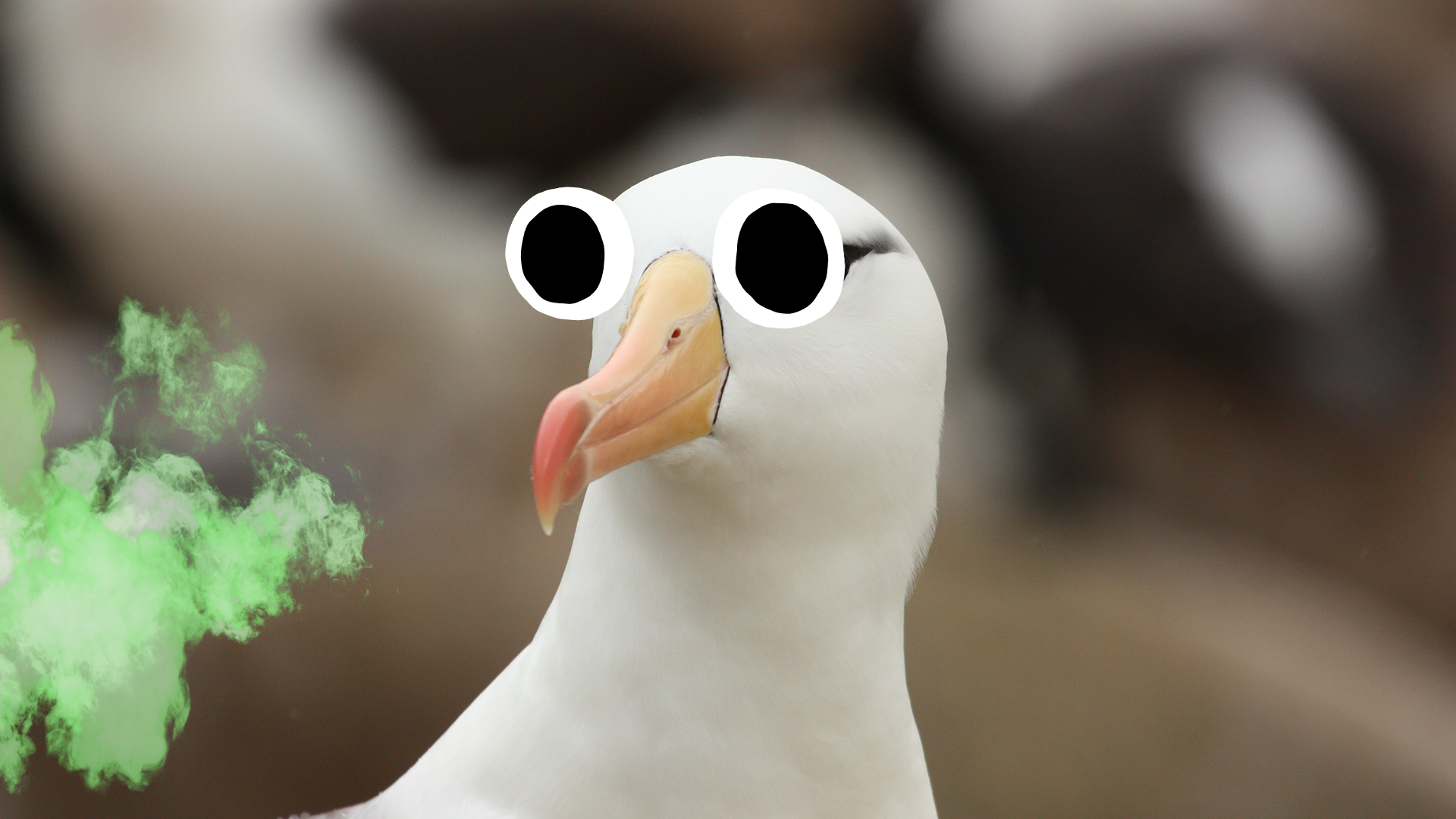
Albatross can smell food in the water from an amazing 12 miles away! Researchers discovered this in 2008 when they strapped GPS devices to 19 wandering albatrosses and observed their movements. The birds moved in an upwind, zigzagging pattern, which is probably the best way for a bird to detect smells. The distance also comes in handy when they're scouring for fish - they can stay out of the way of dangerous predators like sharks as they track their dinner!
13. They love to dance!
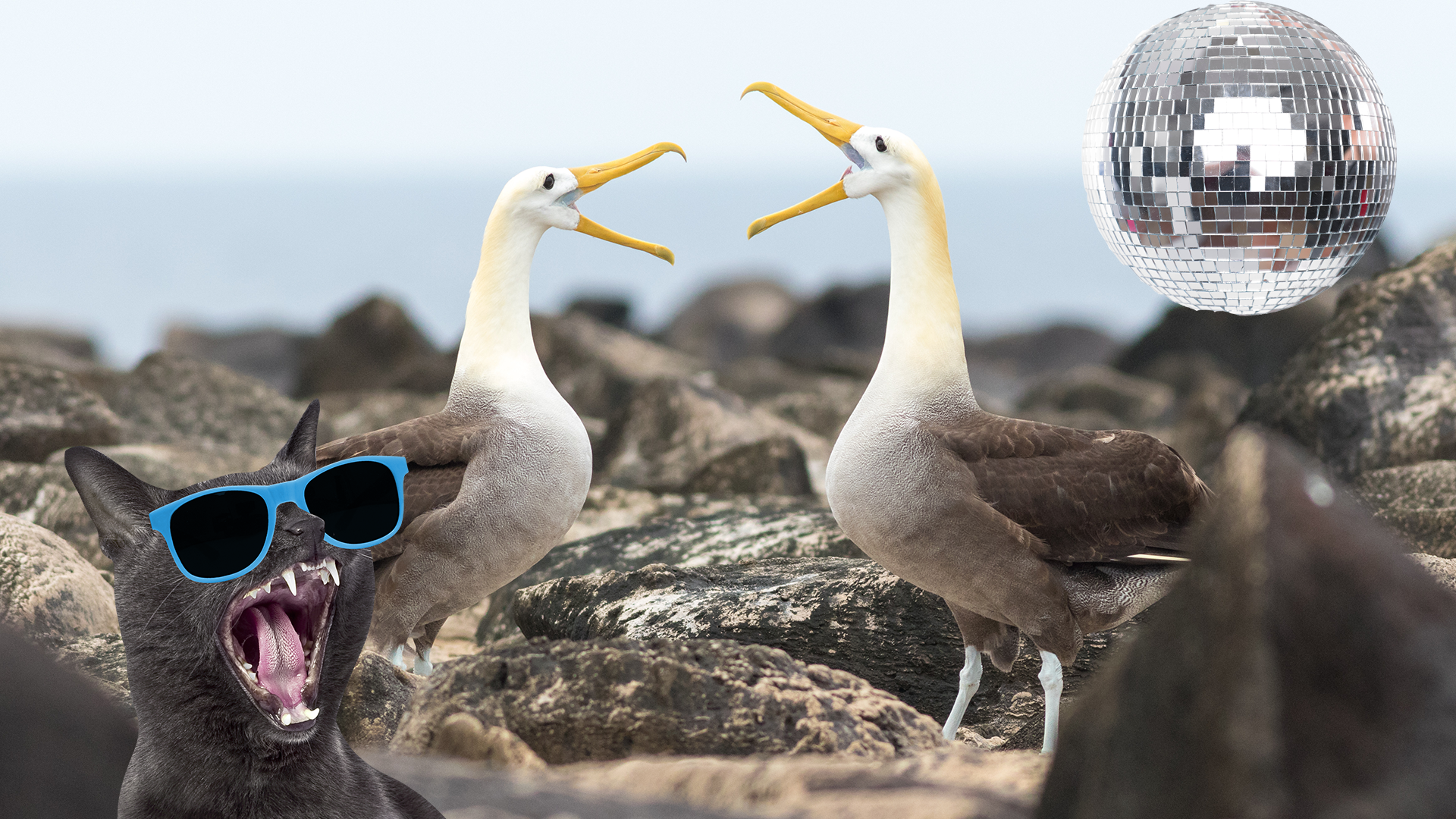
Albatrosses like to attract mates by dancing! They have about 22 distinct dance moves as well, including bowing, yammering, rolling their heads and snapping their beaks. A pair of albatrosses will refine their moves and develop their own dance!
14. There are some interesting myths about them
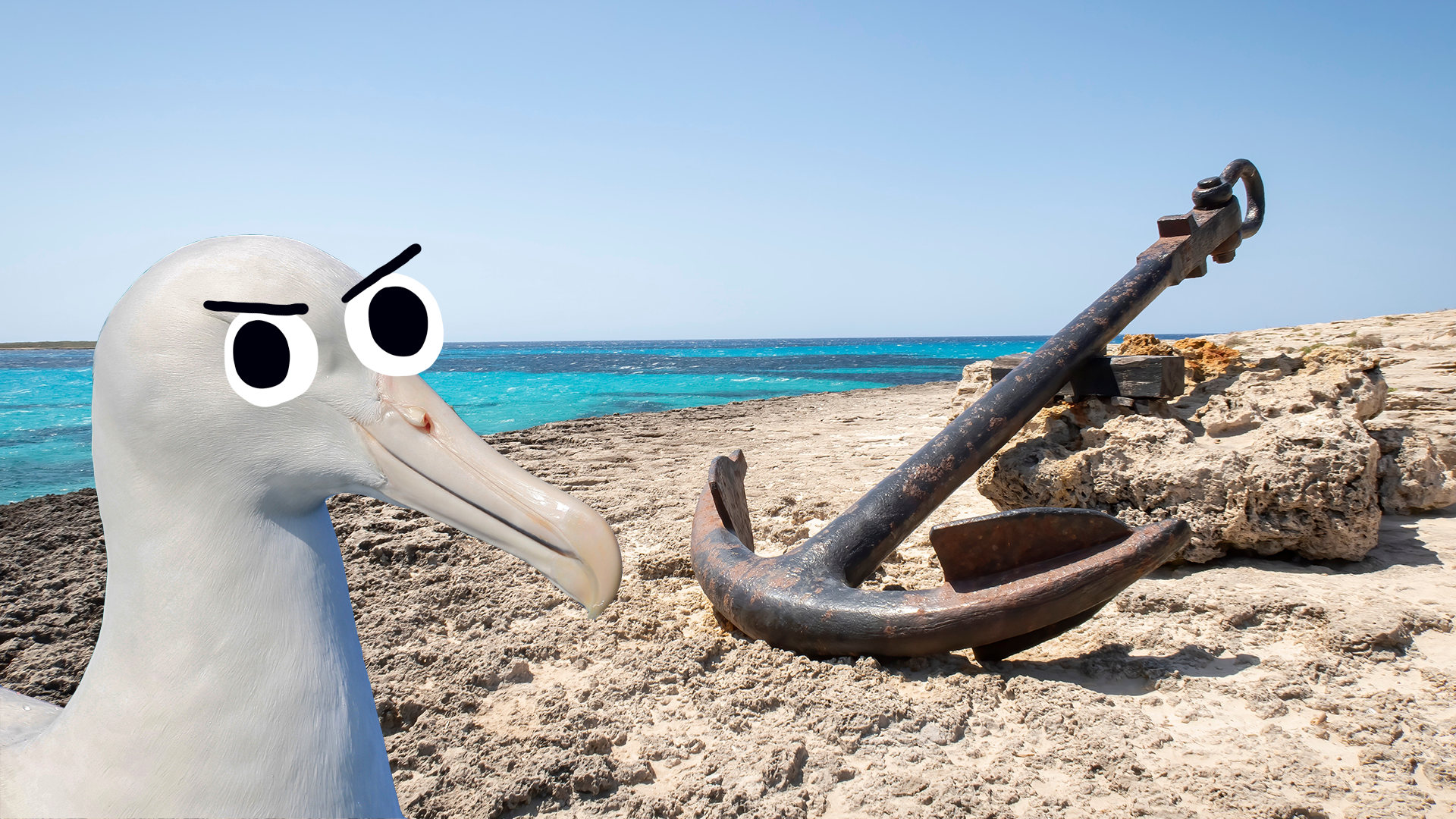
In Samuel Taylor Coleridge's poem The Rime of the Ancient Mariner, published in 1798, a sailor kills an albatross. This brings terrible misfortune to his ship - the wind dies down so they can't sail anywhere, and their food and water supplies run low. The other sailors tie the dead albatross around the mariner's neck to remind him of his sins, and after they all die he is doomed to wander the earth telling strangers his story. Because of the poem, "albatross" is used metaphorically to refer to a terrible burden that feels like a curse. For example, it's sometimes used in music journalism for musicians who have one hit song and then never manage to make anything as successful again. It sounds quite dramatic - but remember how big albatrosses are. Having to carry one forever would be pretty difficult!
15. They're endangered
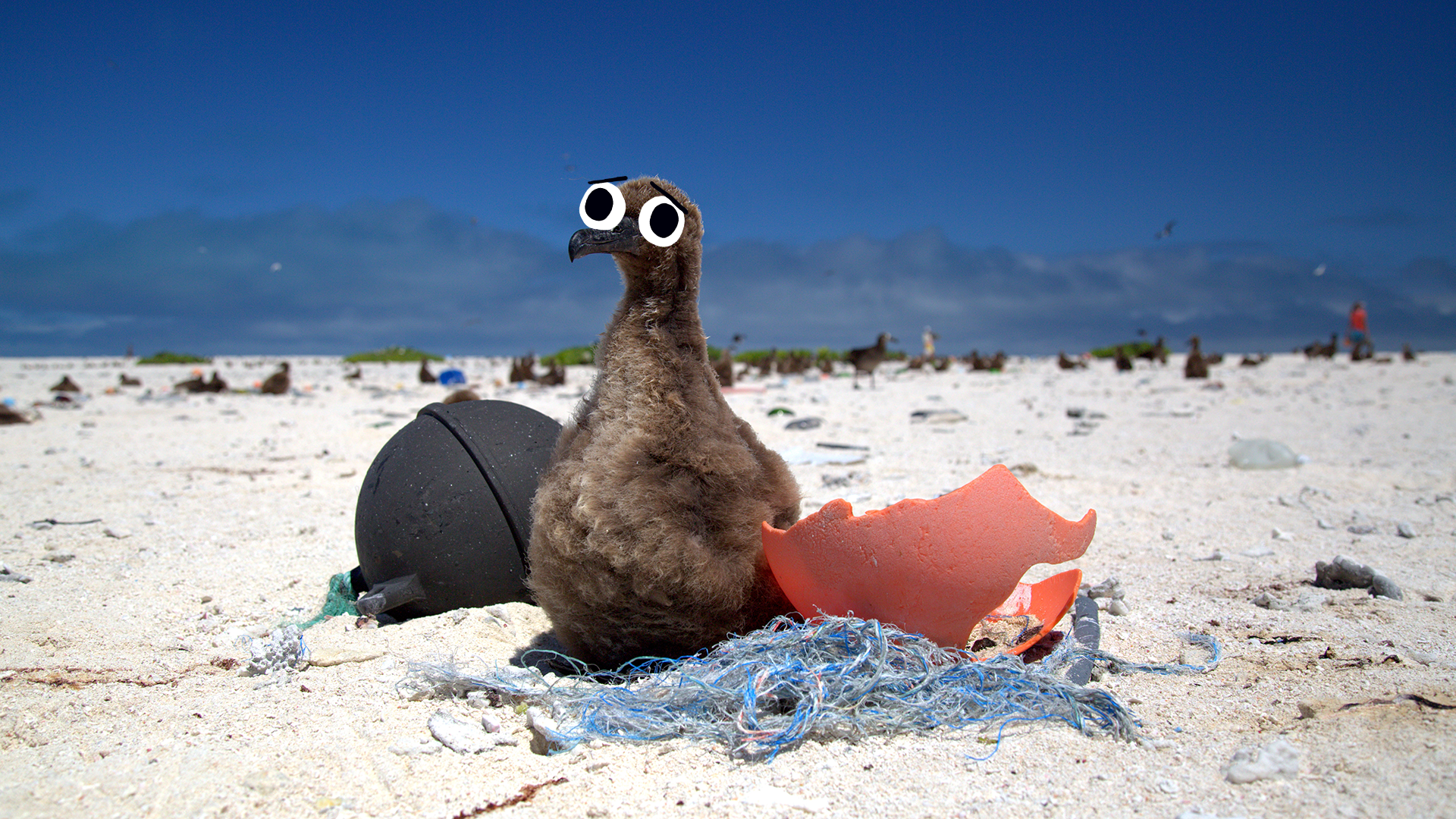
We need to do all we can to protect albatrosses - not because we'll be besieged by bad luck if we kill them, but because they're critically endangered. Human activity is the main cause of this: albatrosses are killed at sea by fishing lines and nets, and ocean plastics kill baby albatrosses when their parents mistake them for real food. To see if you can help, why not get involved with your local effort to clean up plastic waste?
















